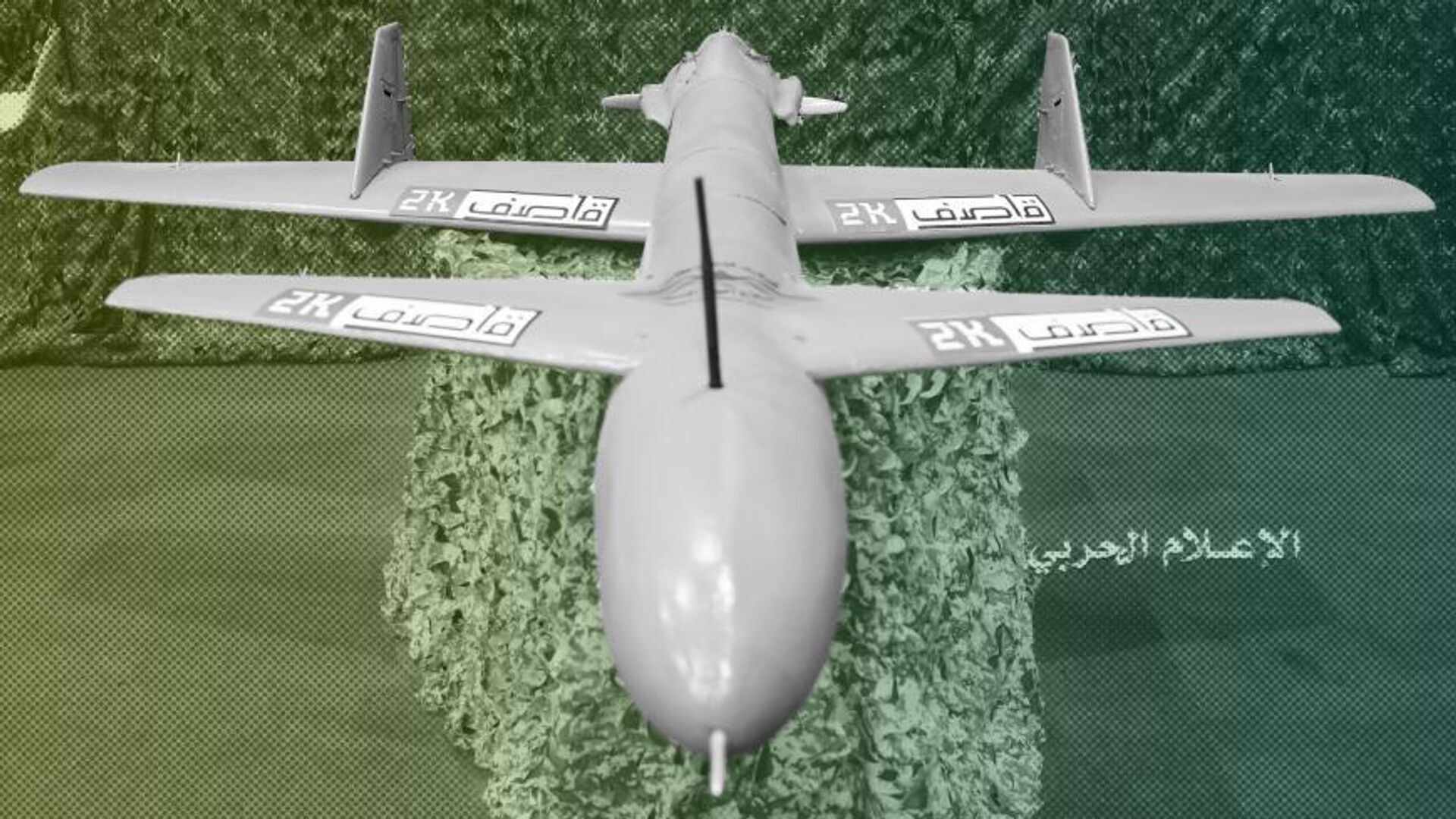Houthis' Long Arm: What We Know About Militia's Drone Fleet

© Photo : Houthi Media Office
Subscribe
Yemen's Houthi militia kicked off a guerilla campaign of ship seizures, missile and drone attacks targeting 'Israeli-linked' merchant ships and the Israeli Red Sea port of Eilat in November 2023, vowing to continue their operations until Israel halts its operations in Gaza. The asymmetric conflict has seen several rounds of escalation.
The Houthis dramatically escalated their operations against Israel early Friday morning, flying a large, explosive-laden drone into downtown Tel Aviv and slamming it into a building 100 m from the US Consulate. Here’s what we know about the Yemeni militia’s drone potential:
The Houthis say Friday’s attack was carried out by the Yafa, a mysterious new ultra long-range airplane-style drone with radar-evading capabilities.
A witness to the incident published a video of the moment a drone hit a building in Tel Aviv. pic.twitter.com/T6TFj1eOnn
— Sputnik (@SputnikInt) July 19, 2024
The Israeli military believes the drone used in Friday morning's attack was an upgraded Samad-3 – a Houthi UAV that’s 2.8 m long, has a 4.5 m wingspan, a 1,500-1,800 km range and a 250 km/h top speed. However, given that the distance between Houthi-controlled areas of northern Yemen and Tel Aviv exceeds 2,000 km, the UAV used in the attack on Tel Aviv is likely either an upgrade to the Samad-series drone, or another model.
The Samad series consists of a whole lineup of spy and strike drones, including the Samad-1 – a surveillance UAV with a 3.5 m wingspan and 500 km range, and the Samad-4, a 3 m long strike drone with a 5 m wingspan, a 2,000 km+ range, and a 50 kg payload, which may include twin unguided bombs on hard points under its wings.

Screenshot from a 2021 report by Houthi-affiliated Yemeni television channel Al-Masirah showing off a Samad-4 strike drone.
© Photo : Screenshot / Al-Masirah
The Houthis also operate Qasef-1 and Qasef-2K kamikaze drones – simpler, low-cost, low-operational range UAVs believed to have taken design cues from the HESA Ababil and featuring a 30 kg warhead. Qasef series drones have a range of 150-200 km, a two hour flight endurance, and a three km flight ceiling. These drones have been used extensively by the militia to target US and British warships in the Red Sea in recent months.
They’re complemented in the strike drone category by the Wa’aed, another Houthi loitering munition with looks outwardly similar to Iran's Shahed 136 (the latter is 3.5 m long, 2.5 m wingspan, 200 kg mass, 50 kg warhead and top speed up to 185 km/h).
The Houthis insist that their equipment is homegrown, and Iranian officials have also repeatedly emphasized that the Yemeni militia does not receive weapons from the Islamic Republic. That said, Iranian media have not denied the transfer of weapons technology to the Houthis, leaving it to the militia to build the armaments using domestic capabilities.

Yemeni Wa'aed loitering munition on display at a Houthi-organized exhibition. Screenshot of Houthi Media Office video.
© Photo : Houthi Media Office
The militia rolled out the Khatif-1, a small, tele-guided strike drone with an estimated 10 kg payload and a range of a few dozen km, in 2021.
An upgrade of that drone featuring an x-shaped tail instead of a ‘v’ pattern known as the Khatif-2 was spotted at a parade in 2022, but its characteristics are unknown.

Khatif-1 (left) and Khatif-2 (right) drones on parade in Sanaa, Yemen in 2022. Screenshot of Houthi Media Office video.
© Photo : Screenshot / Houthi Media Office
The Houthis also operate the Mersad-1 and Mersad-2 series of surveillance drones – thought to be based on a reverse-engineered Boeing RQ-21s Blackjack –a 2.5 m long, 37 kg UAV with a 4.9 m wingspan, 93 km range and top speed of 170 km/h. The Houthi version's characteristics, including what sort of payload it can carry, remain shrouded in mystery.
Another reverse-engineered American UAV in the militia's arsenal is the Raqeep - a copy of the RQ-11 Raven. That tiny US drone was introduced into service with the US military in 2004, and exported to Yemen sometime before 2014-2015 Houthi-led revolution in Sanaa. The small, 0.91 m long, 1.9 kg drone has a 1.37 m wingspan, a 30 km/h cruising speed and 10 km range. It's powered by an electric motor. The Houthi version reportedly has a 15 km range and a 98 minute operational duration.

Houthi Raqeep drone, a reverse-engineered RQ-11 Raven. Screenshot of Houthi Media Office video.
© Photo : Houthi Media Office

